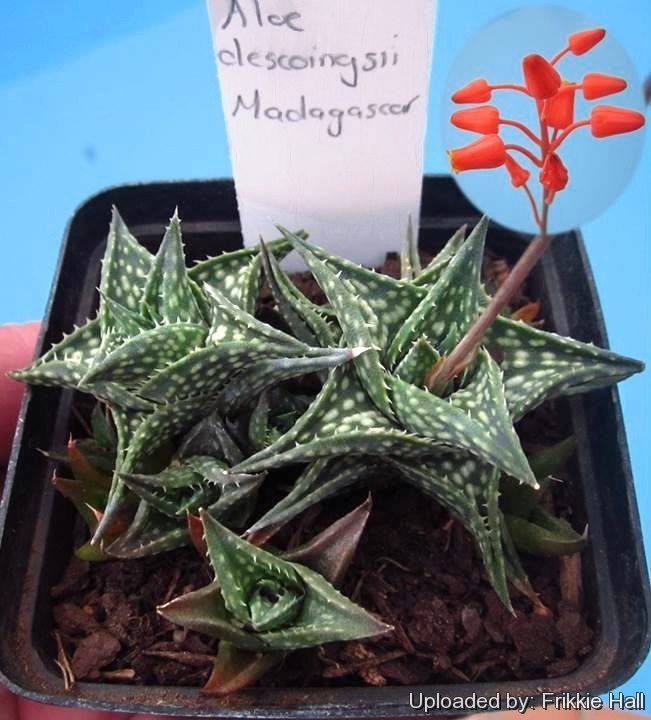
Aloe descoingsii Photo by: Frikkie Hall
The smallest of all Aloes.
Origin and Habitat: Fiherenana Valley, Southwestern Madagascar (Toliara).
Habitat: Shallow soil at top limestone cliffs at low elevation. (approx 350 m) Aloe descoingsiiSN|613]]SN|613]] is endangered in habitat.
Synonyms:
See all synonyms of Aloe descoingsii
back
Accepted name in llifle Database:Aloe descoingsii ReynoldsJ. S. African Bot. xxiv. 103 (1958).Synonymy: 2
Cultivars
(1):
back
Common Names include:
CHINESE (中文): 第可芦荟
Description: Aloe descoingsiiSN|613]]SN|613]] is a dwarf leaf-succulents (The smallest of all Aloes) with flattish heads to 5 cm in diameter and recalls Haworthia in size and shape.
Stem: Acaulescent or very shortly caulescent, clumping freely forming dense groups
Leaves: About 8-10. Stiff, short, densely rosulate ovate, curled up into inside, attenuate 3 to 6 cm long, glaucous green to dark grey-green (or earth coloured in full sun) surface rough with many dull white beautiful markings and distinct white cartilaginous marginal teeth, up to 1 mm long, 1-2 mm apart, becoming obsolete toward tips.
Flowers: On a short (12-18 cm tall), graceful unbranched stem, scarlet-orange with yellow petal tips. The flowers are urceolate with a flat and shortly attenuate base, 7-8 mm long, 4 mm in diameter.
Blooming season (In Europe): Summer.
Subspecies, varieties, forms and cultivars of plants belonging to the Aloe descoingsii group
Bibliography: Major references and further lectures
1) Urs Eggli “Illustrated Handbook of Suculent Plants: Monocotyledons” Springer, 2001. Pages 114-115
2) Edgar Lamb, Brian Lamb “The Illustrated Reference on Cacti & Other Succulents" Volume 5 Blandford Press, 1978
3) Gordon D. Rowley “The illustrated encyclopedia of succulents” Crown Publishers, 01/Aug/1978
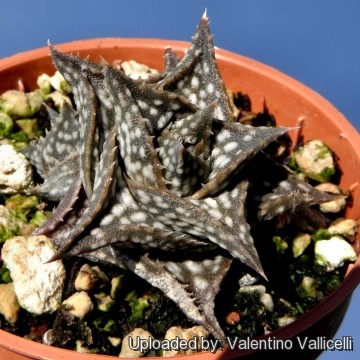 It i is a great Madagascar miniature and the smallest of the aloes. Photo by: Valentino Vallicelli
It i is a great Madagascar miniature and the smallest of the aloes. Photo by: Valentino Vallicelli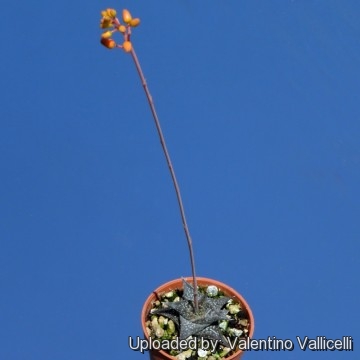 Aloe descoingsii Photo by: Valentino Vallicelli
Aloe descoingsii Photo by: Valentino Vallicelli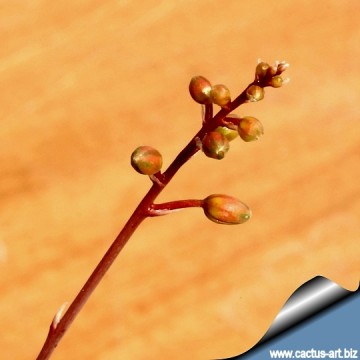 Aloe descoingsii Photo by: Cactus Art
Aloe descoingsii Photo by: Cactus Art Aloe descoingsii Photo by: Cactus Art
Aloe descoingsii Photo by: Cactus Art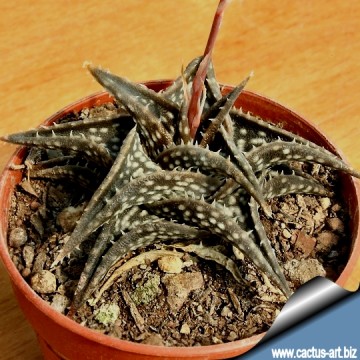 Aloe descoingsii Photo by: Cactus Art
Aloe descoingsii Photo by: Cactus Art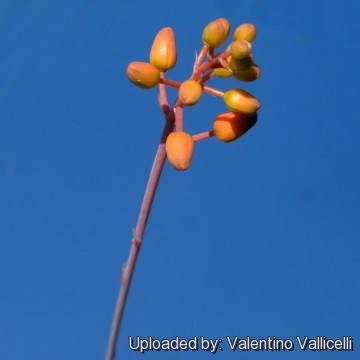 Aloe descoingsii Photo by: Valentino Vallicelli
Aloe descoingsii Photo by: Valentino VallicelliCultivation and Propagation: Aloe descoingsiiSN|613]]SN|613]] is a popular and most rewarding pot plant and one of the most striking species. It is an easy-to-grow plant that could well be valued and cultivated by the sophisticated agave fanciers. It is relatively easy to cultivate provided it is planted in a well-drained situation given adequate water but not over-watered.
Soil: Grow it in light, fertile, well-drained, moderate soils.
Repotting: Use pot with good drainage.
Feeding: During the beautiful season it’s good to enrich the soil using a fertilizer rich in potassium and phosphorous, but poor in nitrogen, because this chemical element doesn’t help the development of succulent plants, making them too soft and full of water.
Exposure: It enjoys light-shade and clumps readily. It may be grown in full sun too but protect in summer from afternoon sun, and avoid reflected heat.
Plants grown outdoor can withstand light frost and prolonged drought and can survive often for several seasons without water, at which point the leaves turn a reddish colour, a sign generally associated with stress.
Hardiness: For safe cultivation it is best to avoid freezing temperatures. During the winter months, the plants should be grown cool to initiate flower development (about 5-10°C)
Watering: Water regularly during the growing season from spring to autumn. In winter watering this plant can be done once every 1-2 months, there is no need to mist the leaves. Keep dry when night temperatures remain below 10° C. Water it less than average if in bigger pots.
Maintenance: Removal of old flower stalks. It is a suckering species, and one plant can eventually cover a large area. Divide the crowded clumps periodically.
Garden uses: Because of their symmetrical form these plants are very attractive when grown in pots, containers and rockeries. It grows much better outdoors in spring and summer, it is also perfect for the bright windowsill.
Reproduction: Usually by cuttings, it is also possible the propagation from seed which germinates easily if sown in well drained soil and covered lightly with fine sand. Seedlings grow fast, reaching flowering size in three to four years. Seeds must be sown as fresh as possible. Fresh seeds germinate quickly at 18°C.
















